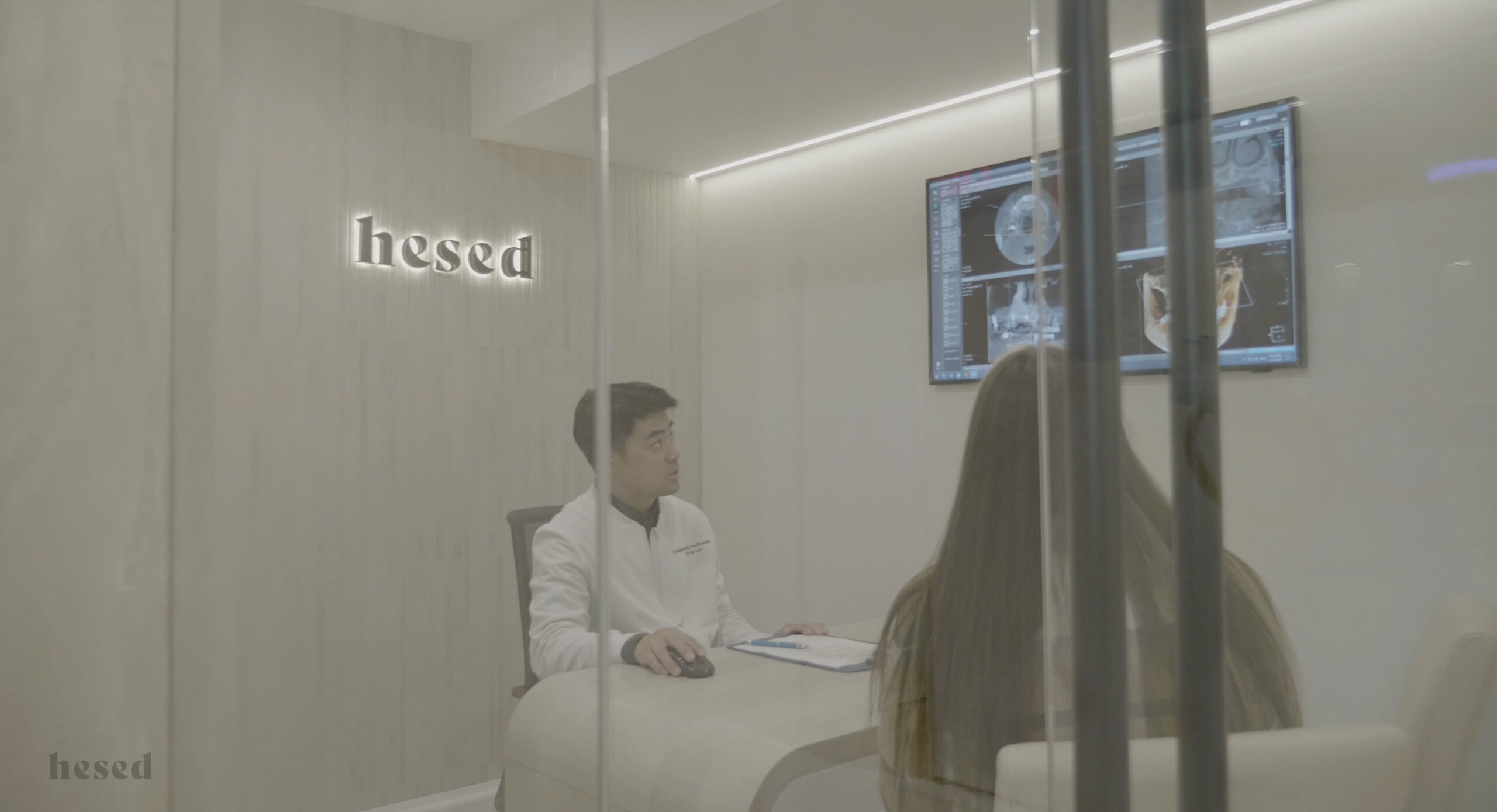Every tooth in your mouth plays a role in maintaining the shape of your face. Therefore, many patients wonder if missing teeth change face shape or not. The short answer is yes. But how?
Don’t worry. This article will address how missing teeth change face shape. In addition, we will propose different options for maintaining your facial aesthetics.

Missing teeth change face shape because a void takes the place of the tooth. There is no longer a tooth that can support the face. The overall shape of the face depends upon:
Teeth support the lips and keep them patent. If a patient loses one or more front teeth, the patient might have misshapen lips. Moreover, face sagging from missing teeth is also expected due to the loss of jaw bone. The presence of teeth within the jawbone stimulates it to grow.
However, when teeth are absent, the nutrition supply to the jaw reduces. As a result, the bone recedes, which proves that missing teeth change face shape.
Removal of wisdom teeth does not affect the shape of your face. This tooth is present at the end of your jaw. They do not have a role in eating, speaking, or aesthetics. A wisdom tooth is preferably extracted when it:
However, the extraction of wisdom teeth might change face shape temporarily due to swelling after the surgery. This subsides within 7 to 10 days.
Patients might experience the following facial changes after missing a tooth:
Tooth loss may be due to various reasons, but the result is always a misalignment of remaining teeth. The teeth drift away from their positions due to a vacant space between them. This will lead to malocclusions like overbite, crossbite, or underbite, depending on where that missing tooth is located.
The molars will be in different places in the jaws. Normally, the top and the bottom teeth meet each other in a proper orientation. Misaligned molars will not fit together correctly while the patient bites. This might disturb the chewing and talking process. One part of the face might appear higher than the other. Hence, missing teeth change face shape.
With no more teeth in the front to act as the natural muscles around the lips, the position of the lips and the mouth itself can change. The muscles will loosen up, and you will see the corners of your mouth becoming downturned. This may give rise to drooping and fine lines and make you seem older than you are.
Loss of bone mass results from bone resorption around the site of missing teeth, and the jaw area gets smaller. A mandible that is smaller as a whole makes the lower part of the face look shorter and more compressed. The lower jaw additionally can rotate forward. This may lead to an even smaller-looking face and a pointed chin.
When a part of the mouth is lost, it leaves a space for the cavities to come in, closing the side of the mouth and making it look hollow. This is especially true if the upper molars are absent. While bone loss progresses as time passes, the sagging look will worsen, leading to a leaner look on the patient’s face.
Now that we know missing teeth change face shape, let’s discuss different tooth replacement options to maintain your beautiful shape.
A dental implant is a permanent and fixed replacement for a missing tooth. Their strength and aesthetic appeal are comparable with natural teeth. They initiate bone regeneration just like natural teeth.
There are different types of dental implants. They can last for about 15 to 30 years or more, depending on how well you maintain them.
A bridge is a cost-effective option for quick treatment to replace missing teeth. In this procedure, support can be taken for the bridge from one or two adjacent teeth. It can be formed from different materials, such as ceramic, metal, or a combination of both.
The only drawback of getting a bridge is that the adjacent two healthy teeth must be reduced to accommodate it.
Orthodontic treatment can be performed to eliminate the space left by the missing teeth. The adjacent teeth are moved to take over it. This is done by application of minimal force over a long period. Metallic braces, composed of metal wire and brackets, can be used.
Alternatively, if there is less gap, you can also use Invisalign. Invisalign or clear aligners are corrective appliances for aesthetic restoration. Clear aligners need to be replaced after a couple of weeks. Maintaining their hygiene is essential to improve their efficacy.
A cosmetic dentist is the best physician to consult when missing teeth change face shape. They can suggest an appropriate replacement for missing teeth in accordance with the shape of your face, health, budget, and the quality of your bone. You might be the right candidate for dental implants rather than orthodontic treatment. The cosmetic dentist will conduct a series of investigations to make the best decision.

To sum it up, missing teeth can change face shape, but there is always a way out. You can have multiple replacement options, including braces, dental implants, clear aligners, etc. You can consult a cosmetic dentist and choose the option that best suits you.
At Hesed Dental, our dental experts in NJ ensure quality and cost-friendly teeth replacements for our patients. You can book your appointment with dentists in NJ. Why delay when you can restore your facial aesthetics and self-esteem right away?

Hesed Dental 543 Gorge Road Cliffside Park, NJ 07010
201 941 8877